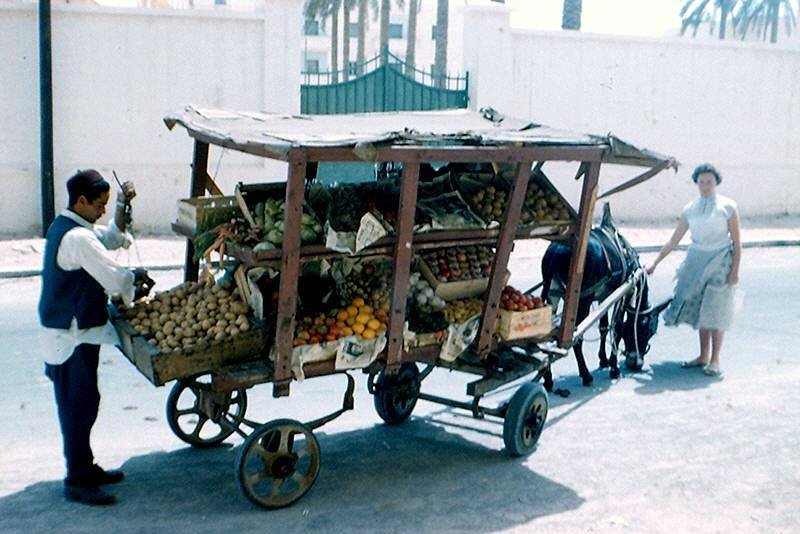For most people, the name “food truck” will conjure images of gourmet burgers and fusion tacos. Across the United States and Europe these mobile eateries offer haute cuisine for the masses. This hot trend has started to catch on in the Middle East, especially in Dubai. In older cosmopolitan cities like Cairo and Istanbul, food carts have historically provided fuel for the busy city workers.
Apart from a handful of ice-cream trucks and a stationary Red Burger Bus (!), Libya has a long way to go to catch up with the global street food phenomenon. Don’t get me wrong, there is a plethora of cafes and restaurants in Tripoli! We just do not traditionally have a street food culture. This is the outcome of two essentially Libyan personality traits.

First of all, eating food on the go is considered rude! Food is a blessing na’ama that is meant to be respected by eating while seated, giving the bounty your undivided attention. You can get away with eating while standing at cafe and kiosk windows, but most people wouldn’t be caught dead eating while roaming the streets! Maybe in the sanctity of your own car, but definitely not on foot! And don’t get me started on ice-cream cones or bananas! No respectable Libyan woman would provoke the vulgar cat calls of adolescent boys and deprived old men, eating either of these in public!
Eating is also a sacred social ritual. Libyans won’t eat alone unless they absolutely have to. Meals are a leisurely gathering of friends or family. Our lives revolve around lunch, the main meal of the day. Most workdays (and school days) end by 2pm leaving ample time to eat at home, or occasionally at a café or restaurant. So there really isn’t a necessity for a quick bite on the street.

What we lack in street food outlets, we more than make up for in food trucks – fresh produce trucks that is. These vehicles (ranging from small pick-up trucks to larger flatbeds), dotting the streets of the cities, sell fresh produce straight from the farm at wholesale prices.
The Libyan diet is centered on the seasonality of fruit and vegetables. Couscous adapts to the weather just as much as our wardrobe does. And there is no way you could miss short season specialties like white truffles, Sahara mustard and loquats.

These food trucks are the legacy of a long history of caravan trade culminating in weekly markets. Vendors rotated, en masse, to different locations in the city throughout the week. Items were imported from southern Europe or Africa. Local farmers would trade their produce with the city dwellers and other merchants off the backs of camels.

As development plans for a modernized Libya took over, market places were swallowed up by buildings in an ever growing urban society. Farmers have now resorted to roaming the streets to sell their offerings in the city centers. And in this way the country continues to come to the city, allowing urbanites to buy locally farmed food straight from the source, at prices that are as low as a quarter of that at the local green grocer or super market.
Libya may be 90 percent desert but there are definitely no food deserts here!
There are some places in Tripoli that sell tea with almonds or peanuts from cats alongside the roads, also in winter cups full of steaming hummus in salty broth. Summertime brings roasted corn along the corniche.
Thank you for your observation Khadija! I’m planning to write about these modest street carts too, just waiting for corn season to take some snaps! Always appreciate your input, and it’s lovely to hear from you 🙂
Carts – not cats!
Was starting to wonder about those cats… thanks for the clarification!